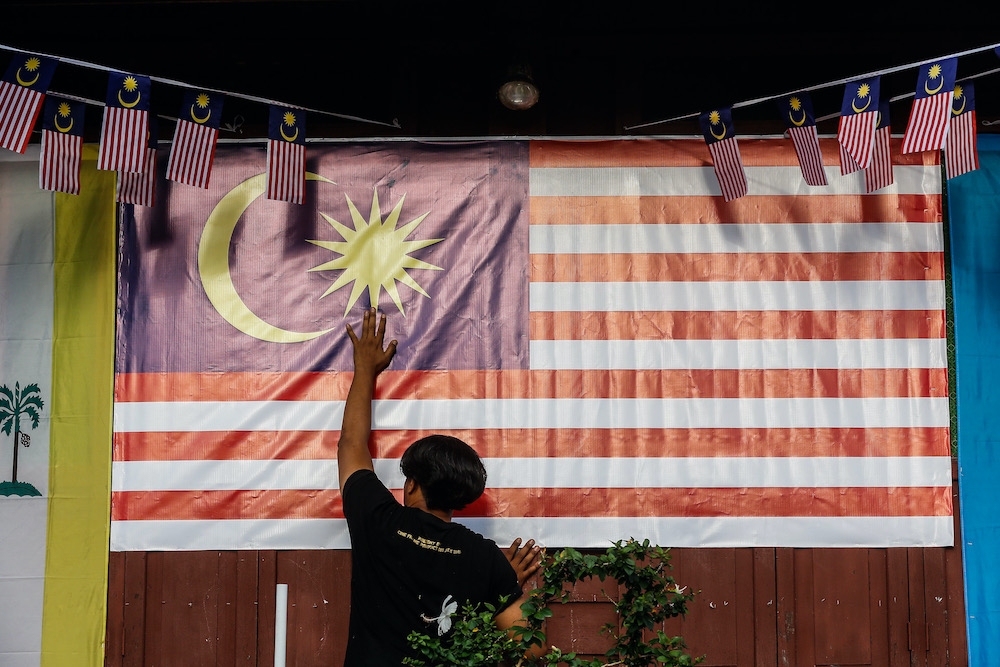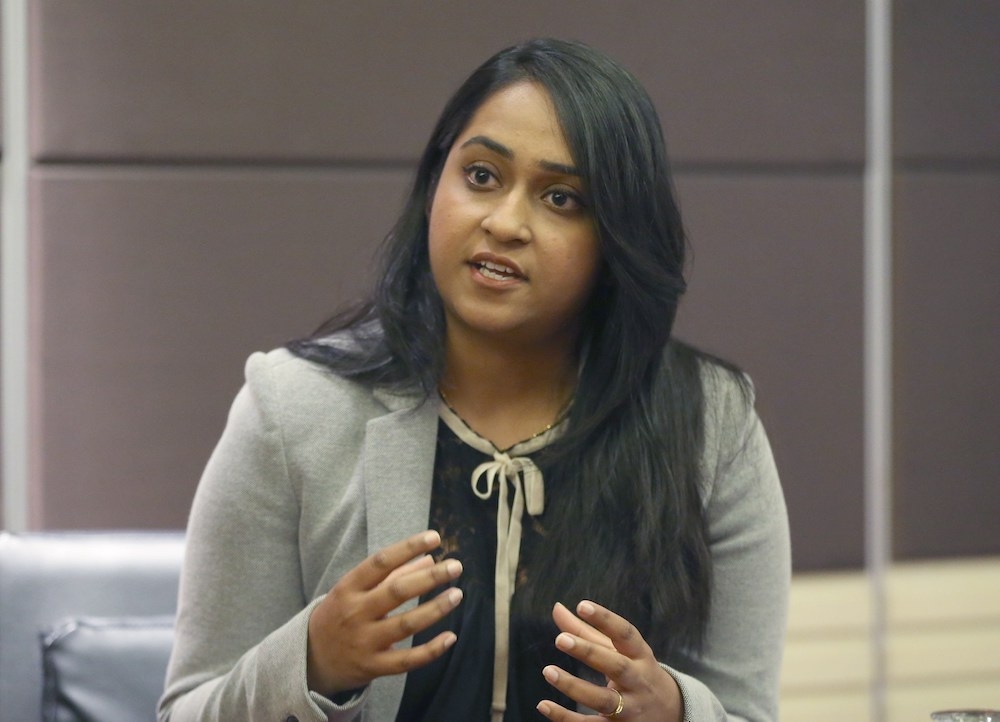KUALA LUMPUR, July 10 — Malaysia does not have official records of how many stateless persons are here, so how do we know the size of this “invisible” population?
One non-government organisation (NGO) has been compiling cases of those who should be Malaysians but have been denied citizenship.
Development of Human Resources for Rural Areas (DHRRA) told Malay Mail it has identified over 16,000 genuinely stateless persons in Peninsular Malaysia from 2016 to June 2023.
Out of about 16,392 verified stateless cases registered with DHRRA, an estimated 7,000 have now been recognised as Malaysians, while the remaining 9,392 are still stateless.
Of the 9,392, the biggest proportion is childhood statelessness at 8,223 persons (which covers children born out of wedlock in Malaysia and children adopted by Malaysians); followed by 1,003 under the pre-independence stateless category (those who arrived or were born here even before Malaya’s independence in 1957 but are denied citizenship); and 166 cases involving babies or children who were born here but abandoned by their biological parents.
Maalini Ramalo, DHRRA’s director of social protection, said some of these individuals have yet to receive a decision from the government on their citizenship applications filed in 2016. (This means that seven years on, their applications are still being “processed” by the authorities.)
For the 9,392, Maalini said most of them have applied for Malaysian citizenship, with exceptions, such as those who are unaware that their previous citizenship application was rejected and might not have put in a new application.
Two other exceptions Maalini mentioned are those who have been stateless since they were children but are “left hanging without any opportunity for citizenship application” as they are already above age 21 and the Article 15A pathway to citizenship is limited to those aged below 21; and abandoned children (whether they have the MyKAS or not, and those who have become adults) who usually do not have ongoing citizenship applications “as there is no straightforward pathway for them to apply for citizenship at the moment”.
(On December 3, 2018, then deputy home minister Datuk Mohd Azis Jamman told the Dewan Rakyat that the green-coloured temporary resident identity card (MyKAS) issued by the National Registration Department (NRD) is for those whose citizenship status is being doubted or yet to be determined, due to either undetermined issues in their birth certificates or due to their parents not having identification documents.
Azis said applications for MyKAS can be made once the applicant reaches the age of 12, and that having a MyKAS allows them to stay in Malaysia for more than 12 months. The MyKAS is valid for five years and can be renewed upon expiry.
While having a MyKAS does not give its holder Malaysian citizenship, Azis had said it grants them temporary resident status until their citizenship status can be determined or until they qualify to be a permanent resident, and added that the card allows them to move and work and deal with related agencies as they have an identification document in Malaysia.)
Under the Federal Constitution's Article 15A, the Malaysian government can register anyone below the age of 21 as a Malaysian citizen in "special circumstances as it thinks fit".
On top of the 9,392 who are still stateless, there are still 500 more files waiting for DHRRA to go through to verify and determine if these individuals are genuine stateless cases with Malaysian links.
For Maalini, a figure of over 16,000 stateless persons in Malaysia is “big”.
“It’s big, because every life matters and thus our country’s development is affected by the limitation we give to this stateless group. They are not a floating population that someday will return to their respective countries,” she said, highlighting these stateless individuals — who are born here and who only have Malaysia as their home — are not foreigners.

Could the numbers be even bigger?
Maalini said the actual number of genuine cases of stateless persons in Malaysia could even be bigger, due to the limited resources that DHRRA has as an NGO to collect data.
“Indeed I would agree it’s just the tip of the iceberg, simply because we haven’t included the Sabah and Sarawak numbers, so this does not represent the whole of Malaysia,” she said.
For the more than 16,000 stateless cases registered with DHRRA, such data were collected throughout Peninsular Malaysia except for Kelantan and Terengganu.
In Peninsular Malaysia, DHRRA focused only on stateless cases involving those in the pre-independence context and childhood statelessness (abandoned children/foundlings; children born out of wedlock to Malaysian fathers; stateless children adopted by Malaysians).
DHRRA did not collect data on the number of persons in Orang Asli communities who became stateless (due to documentation issues such as late birth registrations), as DHRRA’s limited resources prevented the NGO from carrying out door-to-door mapping with them.
As for why DHRRA did not collect data on the number of stateless persons in Sabah and Sarawak, Maalini said the group lacks the resources to have a physical presence in those two states and also cited the high volume of cases in Sabah.
While Sabah and Sarawak has the same categories of stateless cases as Peninsular Malaysia (including indigenous communities who face high risk of statelessness if undocumented), Sabah itself also has additional complexities involving the nomadic Bajau Laut population who are undocumented, as well as undocumented persons who have Indonesian or Filipino parents.
Maalini said some undocumented children born in Sabah may not actually be stateless (or who are not citizens of any country) as there is a possibility that they may have pathways to citizenship in Indonesia or the Philippines.
“So people tend to assume that undocumented migrants who have parents who are properly from Indonesia, from Philippines, even though their kids are without documents, they would assume them to be stateless, and also there's an assumption that refugee kids are stateless, but it really depends which context which country they belong in,” she said.
Adding to the complexity is that there might also be marriages between Malaysians and undocumented migrants in Sabah, while there have also been those from east Malaysia — without Malaysian citizenship but with MyKAS for example — moving to peninsular Malaysia to work and some of them have also married Malaysian citizens there.
DHRRA’s data collection instead focuses on stateless persons with a strong attachment to Malaysia and who are truly stateless, and its compiled numbers might be smaller than the public’s assumption (as these might include those who have options to take up citizenship of other countries).

Other limitations
Maalini said the Covid-19 pandemic also affected DHRRA’s data collection on stateless persons, and DHRRA is also not actively updated by stateless families when they give birth.
“There was a good two and half years during Covid period, we didn’t have an active collection of data, and chances are more children would have been born and not necessarily everyone would come and register with us,” she said.
One of the biggest categories of persons who are still stateless in DHRRA’s database are those affected by the Law Reform (Marriage and Divorce) Act 1976, which requires all marriages in Malaysia from March 1982 onwards to be registered with the government in order to be valid.
Couples who did not register their marriages would cause the Malaysian government to treat their children as born out of wedlock and could risk them becoming stateless, while children born in Malaysia to Malaysian fathers and non-Malaysian mothers — before the marriage was registered or without a registered marriage — are again treated as born out of wedlock and also denied Malaysian citizenship by the government.
In many of these reported cases, the family is unable to find or contact the non-Malaysian mother who left them and the child remains stateless as they did not take on their non-Malaysian mother’s citizenship.
Maalini said many of these children are now aged above 21 — which means they would not be able to apply for Malaysian citizenship under Article 15A — and remain stateless, adding that failure to address their situation could result in the number of stateless persons in Malaysia growing.
For Malaysia-born women who are stateless due to their parents’ unregistered marriage, their own children will end up becoming stateless too, even if they are married to a Malaysian.
This is because they cannot register their own marriages due to their stateless status, and this results in the next generations being stateless.
Why do these numbers matter?
“Being a Malaysian-led and community-based organisation, we hold utmost respect and loyalty towards the country.
“Hence, before we can raise the issue to the government, we need evidence on what is really going wrong among Malaysian families that did not have complete documents and citizenship status for their family members who absolutely have zero other country to call home,” Maalini said.
In collecting these data, DHRRA carefully checks and verifies if individuals are truly stateless with strong linkages to Malaysia and with the right to Malaysian citizenship, before registering them as stateless cases in its database. This is done by community-based paralegals who have been trained on citizenship laws and the NRD’s standard operating procedures.
Maalini said this is a process that DHRRA takes very seriously as it acknowledges that there have been people attempting to use fraudulent methods to get documents, and also because it wants to identify genuine stateless cases to enable the government to recognise them as Malaysian citizens in line with the Federal Constitution.
She said the government’s reluctance to address these stateless cases “has only led to frustration among Malaysian families who are in an uphill battle in the journey to acquire citizenship for their family members”, adding that urgent action is needed.
“The Madani government we have today is responsible for legal and policy reforms that are necessary to effectively address statelessness. It is therefore most sensible, to first identify and categorise those truly stateless and from there on facilitate their access to citizenship in accordance with the Federal Constitution.
“Malaysia has to take responsibility over its own lack of action sooner or later, it’s best to start now so we effectively address it before the numbers grow exponentially,” she said, adding that DHRRA continues to seek opportunities to work hand-in-hand with the Malaysian government to address statelessness.






















